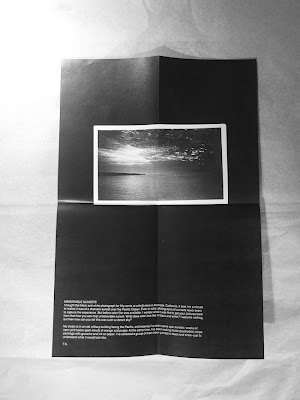Darmstätder Werkblock. By Tacita Dean. Steidl, 2009. 80pp., illustrated throughout, 26x15,3cm. Edition of 1000, signed and numbered.
There is something important about this work by Tacita Dean, and the thoughts and feelings behind making this record. Removed from this, the images themselves are quite poetic in their stripped down beauty - a quality that intertwines with the intent.
Book description:
"At the end of September 2007, the Hessisches Landesmuseum in Darmstadt closed for renovation. This has also meant a proposed restoration of the seven-room installation by Joseph Beuys known as Block Beuys, 1970-86.
The walls of the rooms are famously covered in brown and beige jute and the floors are carpeted. Beuys worked on the installation himself over many years, adding and changing things up to his death. The rooms continue to carry the aura of this activity and so the museum’s decision to remove the jute and carpet has caused great upset among lovers of Block Beuys worldwide.
The controversy centers on the fact that Beuys never made particular reference to the jute walls, allowing the assumption that they are not relevant to any question of renovation. Just prior to the museum’s closure, Dean painstakingly filmed the walls, the carpet and any detail of the gallery décor, which was soon to be replaced, seeing them as analogous to the entropy in and of Beuys’s art, whilst carefully avoiding any sighting of the work itself.
Working closely with Gerhard Steidl, she is extending the film into an artist’s book."

















































